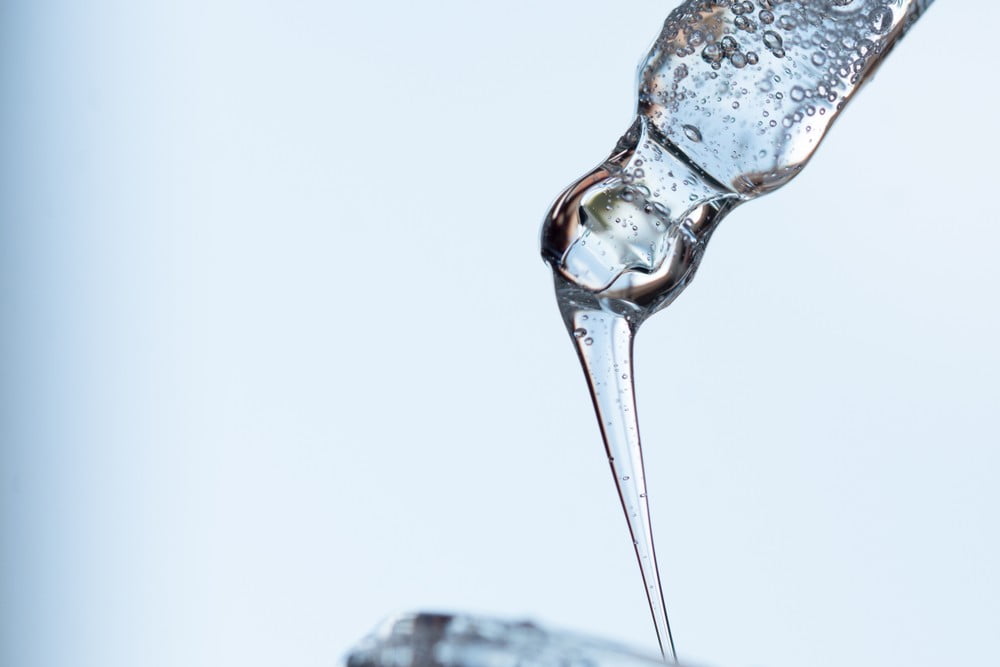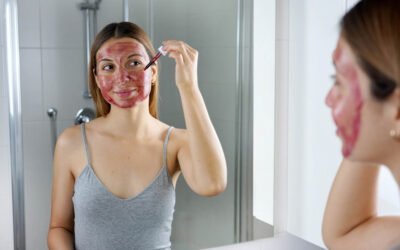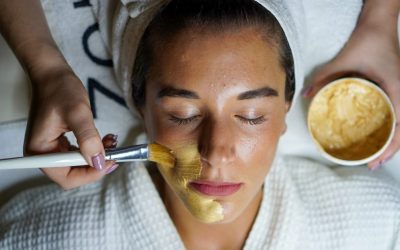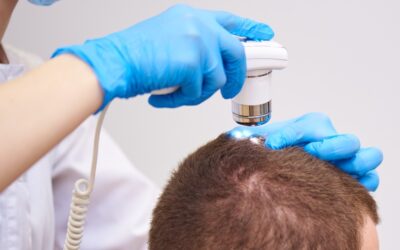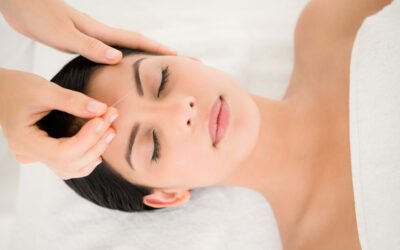Have you ever heard of dermaplaning? It is not an ordinary treatment used for skin exfoliation. Nowadays, dermaplaning exfoliating treatment is trending, so you should know about the role of hyaluronic acid after dermaplaning.
What is Dermaplaning?
You must be wondering to know about this skin treatment and why it holds so much importance. This treatment is done using an exfoliating blade to remove dead skin cells and hair from the uppermost layer of your face.
The purpose of dermaplaning is to make your skin surface smooth, young and fair. This treatment also claims to remove deep acne marks on your skin, while also helps in removing hair that grows on your face.
Today facial beauty matters a lot, so people use various products for the face. In this article we are talking about the benefits of applying hyaluronic acid on the face after dermaplaning.
It may sound chemical, but hyaluronic acid have several benefits for the skin. In addition, we will also discuss in detail about the damage and precautions caused by hyaluronic acid.
Benefits of Hyaluronic Acid After Dermaplaning.
Hyaluronic acid is present naturally in the human body. It is beneficial for eye and joint related problems. On the other hand, it is used as a medicine for the skin.
It plays an important role in various biological processes such as skin repair, cancer protection, wound healing, anti-inflammatory and immunomodulation.(1) Let’s see the health benefits of this;
1. Helpful In Healing Wounds.
Hyaluronic acid play an important role in wound healing. It is naturally present in the skin. It can heal the injury or wound rapidly in case of any damage to the skin. In fact, hyaluronic acid increases the production of collagen, which can speed up the wound healing process.(2)
Another research conducted tests on 43 patients suffering from severe wounds. The study found that applying creams containing hyaluronic acid slowly healed the wounds. Based on this, doctors have considered hyaluronic acid to be affected on wounds.(3) However, keep in mind that if the wound is too old or deep, consult a doctor.
2. Moisturizing.
The homeostasis property present in hyaluronic acid helps in maintaining skin moisture. On the other hand, it has moisturizing properties that can enter the skin deeply and help to maintain its moisture.
This fact it is also confirmed by a research paper available on the NCBI site. It can be believed that this acid can be beneficial for those who are suffering with rough skin.
3. Anti Aging.

As per the research the homeostasis present in hyaluronic acid help to maintain skin moisture. Thereby, this can relieve roughness and wrinkles in the skin with age. With this respect, it can be assumed that homeostasis present in hyaluronic acid can reduce the anti aging process in the skin.
4. Helpful In Skin Flexibility.
As we mentioned above, hyaluronic acid has anti wrinkle property which keep your skin younger. Another research has shown that people who were used hyaluronic acid for about 8 weeks have seen improvement in their skin flexibility. On this basis, it can be said that hyaluronic acid can improve the flexibility of the skin to some extent.(4)
5. Helpful In Keeping The Skin Smooth.
As you have known, hyaluronic acid has moisturizing properties. This can help to keep the skin hydrated. It can also reduce the uneven texture of the skin. This makes the skin look smooth.(5)
6. Helpful In Reducing Facial Redness.
Research suggests that exposure to harmful UV rays of the sun makes the skin red. This redness increases when it happens continuously. Therefore, using hyaluronic acid can protects the skin from UV rays. It can also help in reducing any damage to the skin such as redness and inflammation.
7. Helpful In Treating Eczema.
Eczema is a skin problem that causes swelling, redness or itching on the skin and face. Also, rashes are formed on the skin and face, inside the elbow and behind the knees or on the limbs.(6)
A study was conducted on 20 people to see the effect of hyaluronic acid on eczema. It was used on their hands and feet. After 4 weeks, it was observed that the area with hyaluronic acid has improved skin inflammation, while improvement also found in eczema.(7) Hyaluronic acid can be believed to work in the treatment of eczema.
Let us now know how to use hyaluronic acid.
How To Use Hyaluronic Acid For Face And Skin?
In this article we have explained the benefits of hyaluronic acid for the skin and after dermaplaning. In such a situation, it is also important to know how to use it to take full advantages of it, which is mentioned below.
- Hyaluronic acid can be used as cream, gel and serum on the skin.
- Some people also use it as a supplement and injection.
- Wash your face and hands properly before going to bed at night. Then apply hyaluronic acid after drying the face.
- While using hyaluronic acid serum, take a few drops of it in your hands and apply it on the face along the neck.
- Try tapping it with your fingers while using it and can also massage slowly with light hands.
- Do not rub the hyaluronic acid too much after applying it on the face, as it is absorbed into the face and skin by itself.
- Apply it on the face and skin and leave it overnight and wash off with normal water to the next morning.
Side Effects of Hyaluronic Acid.
The most common side effects associated with hyaluronic acid on the face are skin pain, redness, itching and swelling.
However, these side effects of hyaluronic acid usually do not last for more than seven days.
Frequently Asked Questions.
1. Does hyaluronic acid make the skin fair?
No, none of the home made recipes, cream or medicine can make the color fair. All these things can only help in improving the skin colour.
2. Who should I go to for my dermaplaning?
Don’t trust anyone to do the process. We advise you to go to a dermatologist or plastic surgeon or medical aesthetics to get the best and safer results. Please don’t try it at home. Since dermaplaning is done with surgical tools (not with your average razor), you should not do it at home to avoid any damage.
3. Is hyaluronic acid good for pimples?
Yes, hyaluronic acid on the face can be beneficial in reducing acne, but there is a lack of research on how helpful it is. Therefore, be sure to consult a doctor before using hyaluronic acid for acne.
4. Does dermaplaning hurt?
The idea of slipping a blade on your face can be scary, but it’s not really painful at all. Think of it as shaving another part of your body.
5. Can you make up after dermaplaning?
Since dermaplaning removes all the short hair on your face, your makeup will actually glide super smoothly. But try to avoid doing makeup immediately after your dermaplaning treatment.
It is considered good to let the skin breathe for the rest of the day “If you need to do makeup, you can, but the protective layer of your skin is more open and makeup can irritate the skin more. Once your skin is right (about a day).
6. Should I apply anything on my skin after dermaplaning?
Since the protective layer of your skin will be more weak after dermaplaning, you can use moisturizing cream to repair your skin and help to keep it super hydrated and happy.
7. Is there a downtime after dermaplaning treatment?
Some light redness in the skin may be expected but not always. It is completely fine and normal to do during lunch and go back to work after 40 minutes of treatment.
Bottom Line.
After knowing the benefits of hyaluronic acid for the skin as well as dermaplaning, one would surely like to include it in the skin care routine.
Just keep in mind that while using it, take special care of the precautions mentioned in this article. This article explains how to use hyaluronic acid on the face. You can also read other articles on our website for other skin related information.
+6 Sources
Freaktofit has strict sourcing guidelines and relies on peer-reviewed studies, educational research institutes, and medical organizations. We avoid using tertiary references. You can learn more about how we ensure our content is accurate and up-to-date by reading our editorial policy.
- Hyaluronic acid, a promising skin rejuvenating biomedicine: A review of recent updates and pre-clinical and clinical investigations on cosmetic and nutricosmetic effects; https://pubmed.ncbi.nlm.nih.gov/30287361/
- Hyaluronic acid: A key molecule in skin aging; https://www.ncbi.nlm.nih.gov/pmc/articles/PMC3583886/
- Efficacy and safety of hyaluronic acid in the management of acute wounds; https://pubmed.ncbi.nlm.nih.gov/17173469/
- Efficacy of a New Topical Nano-hyaluronic Acid in Humans; https://www.ncbi.nlm.nih.gov/pmc/articles/PMC3970829/
- Skin anti-aging strategies; https://www.ncbi.nlm.nih.gov/pmc/articles/PMC3583892/
- Eczema; https://medlineplus.gov/eczema.html
- A clinical evaluation of the comparable efficacy of hyaluronic acid-based foam and ceramide-containing emulsion cream in the treatment of mild-to-moderate atopic dermatitis; https://pubmed.ncbi.nlm.nih.gov/21896129/

 Workout
Workout
 Meditation
Meditation


 Stories
Stories


 Podcast
Podcast E-book
E-book